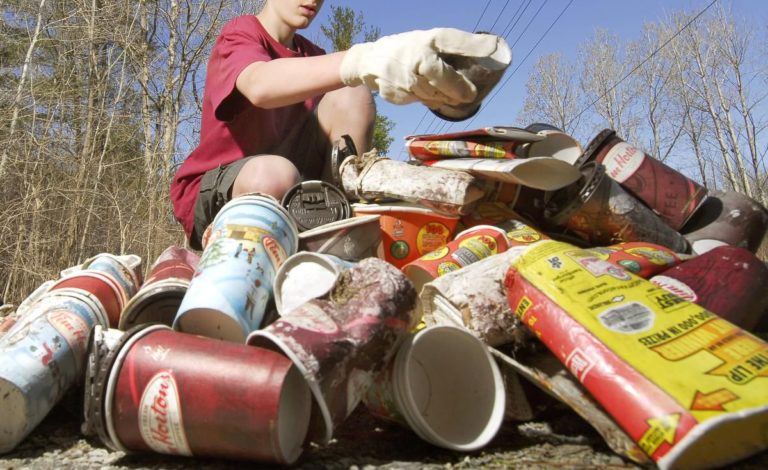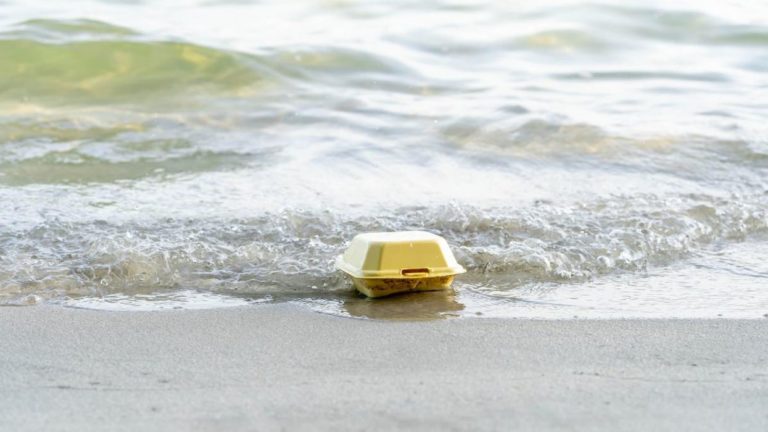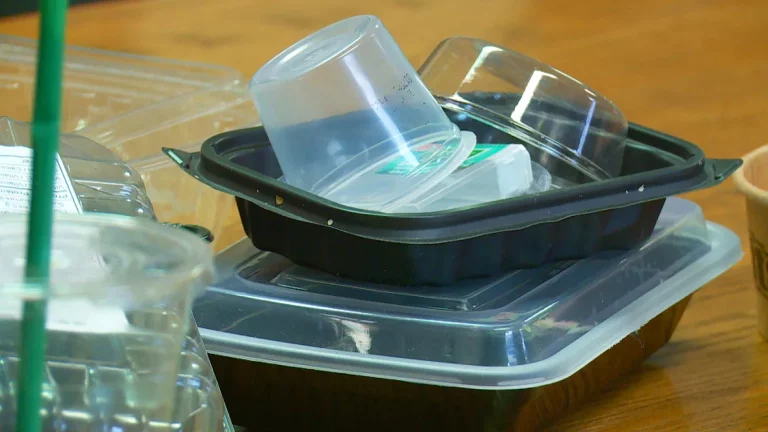
With takeout options in abundance and food delivery at the touch of our fingertips, we are using more and more single use items. Plastic items from take-out food and beverages are largely dominating global litter so it’s time to start addressing our take-out culture.
Let’s think for a moment about our own take-out habits. For example if you and I, every day this week, both grabbed a coffee to go in the morning and bought a takeout lunch, are we really contributing that much to the plastic problem? On face value these choices all seem pretty harmless but when the coffee cup is single use and the sandwich was in a plastic wrapper, we’ve already got two single use items each. Now we’re probably going to want a drink to wash that sandwich down with and maybe a sweet treat for after. That drink is more than likely in a plastic bottle or a takeout container made from a mix of paper and plastic.
Unfortunately it’s likely a similar story for that sweet treat, it’s either pre-packaged, or the bakery has pre-wrapped it in plastic (thanks Covid!). That brings our total plastic single use items to 4. Between you and I that’s 8 items per day, 56 items per week 224 items per month. Just from one coffee and lunch every day. 224 single-use plastic items between two people. Bear in mind, this is without the likely addition of cutlery, tubs of condiments or straws. It might seem like just a coffee or just a sandwich, but if you think that there are currently over 37.5million people in Canada that’s a lot of morning coffee cups! In fact Tim Hortons is number two on Greenpeace’s Top 5 Plastic Polluters list- for the second year in a row! Tims’s packaging was the most abundantly found litter in six of the nine locations from which this data was gathered.


Image from greenpeace.org
I haven’t even begun to talk about our online food habits. In 2020, The Agri-food Analytics Lab (AAL) found that in a 6 month period 63.8% of Canadians have ordered food online in some capacity. The most popular reason being convenience, the second most popular reason was due to concerns over Covid-19. The online take-out industry is booming since the virus; before the pandemic 29.6% of Canadians were ordering food online once a week, in 2020 this grew to 45.4%! It doesn’t seem like this growth has any intention of slowing down.
Almost half of the Canadians the AAL surveyed said that they would continue to order food online at least once a week after the pandemic. More take-out means more single use items, so what does this mean for our oceans? In a 2021 study more than 12 million litter items were retrieved from 7 major aquatic environments globally. Out of the various different litter origins, take-out items were present in all 7 environments. Plastic food containers and cutlery were the most-reported items found in river waters and were very common on shorelines.
Our litter tends to be trapped in nearshore areas meaning that land-sourced plastics are released into the open ocean. As we know, plastics are very persistent in the environment and will slowly break down into smaller and smaller plastic pieces. Even though we might not necessarily see our take-out containers bobbing around in the open ocean (unless of course you’re looking at one of the ocean’s five garbage patches) the smaller plastic fragments aka microplastics, can be found in all layers of the water column. The UN is already calling our ocean plastic a planetary crisis.
We can even see plastics in our sedimentary records; coastal sediments that have been analysed from 1845- 2009 showed an exponential increase in plastic deposition from 1945, this increase correlates closely with worldwide plastic production. Basically plastics have been polluting our land and seas since the start of production and what’s more is that the amount of microscopic plastics found in these sediments doubled every 15 years! These figures only date up to 2009, just think how much our plastic usage has increased since then. In the last year alone our consumption has increased by 16%, and that’s just in the takeout food industry.


Image from ecowatch.com
The impacts from plastics in our oceans are far reaching; killing our marine fauna, through ingestion and suffocation, destroying our marine flora, such as plankton which provides the world with 50-80% of its oxygen. All the while putting an economic strain on coastal areas. Unfortunately it’s not an easy feat for restaurants to switch to non-plastic alternatives, and even when turning to biodegradable or compostable options there is currently no universal solution or method to properly dispose of these non-plastic alternatives that will ensure better environmental outcomes.
But there is hope, some eateries are already making huge efforts to go plastic free, some even offer zero waste home delivery. These restaurants bring the whole meal in reusable containers and then later collect the dirty dishes from your doorstep. No plastic and no washing up! Other restaurants allow you to ‘rent a container’ whereby you pay a deposit for a reusable container and then you return it at a later date, getting your deposit back. If you’re getting take-out on the go some places are happy for you to bring your own containers, if you’re unsure it’s always worth a shot to ask. Some establishments may not have thought of offering that service and your inquiry might get others thinking about their plastic footprint.


Image from cbc.ca
We all need to kick our single use plastic habit because this industry is not slowing down; it’s estimated that over $12 billion dollars have been committed to online interface services in the food industry, for the next 5 years. Our take-out culture is going to continue to grow exponentially and, if nothing changes, so will our plastic consumption.
